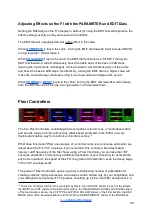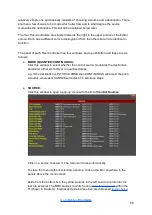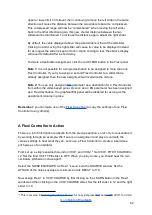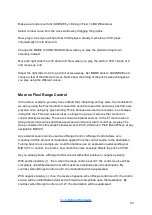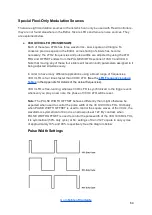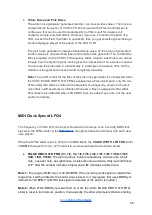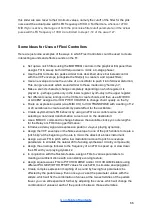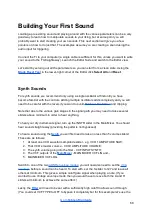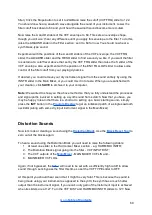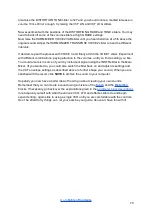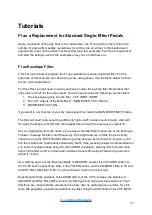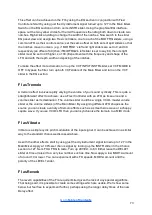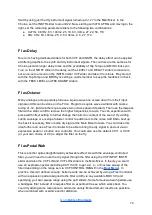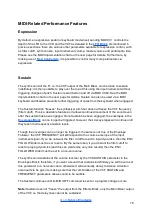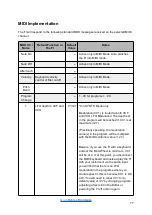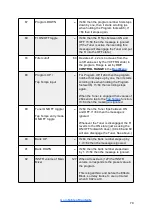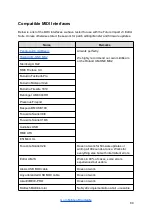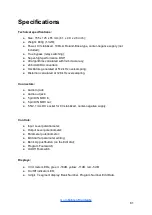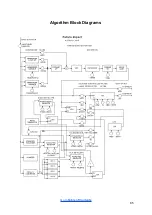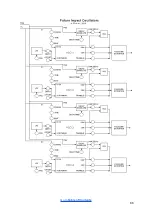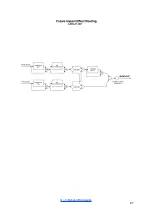
FI as Chorus
A chorus is achieved by taking the dry signal (instrument, synth or both) and then using a
delay line to create a copy of that signal. The delay time of the copied signal is then
modulated using an LFO which causes its pitch to fluctuate. When paired with the original
signal in a 50/50 mix, the tuning differences create the characteristic shimmering sound.
Start by using just the dry instrument signal turned up to 127 in the Main Mixer. Switch on
the Chorus section and raise its INSTR slider to 64 to give a 50/50 dry/wet mix. Chorus
delay times are around 20-35ms. Set the DELAY1 slider to 25ms. Turn up the LEVEL1 slider
to hear the delay; it is quite short so you may not perceive it very well. Now set a frequency
on LFO A - start at about 4Hz. You won’t notice any change until you turn up the MOD1A
slider - set this to about 10. This will start to vary the delay time.
Experiment with the LFO A FRQ and the MOD1A amounts. To keep the results sounding
musical, apply less modulation at fast LFO speeds; more modulation can be applied at low
LFO speeds. You could also try adding a second delay line with different LFO and MOD
settings to further thicken your sound.
FI as Flanger
A flanger is fairly similar to chorus but uses shorter delay times of around 5-15ms and the
mix is mostly wet. It also typically uses feedback.
Again start by using just the dry instrument signal turned up to 127 in the Main Mixer. Set the
Chorus INSTR slider to about 105, the LFO A FRQ to about 0.68Hz, the LEVEL1 slider to
63, the DELAY1 slider to 5ms and the MOD1A slider to about 30. Now set the FBCK LEVEL
slider to about 100.
Experiment with negative settings of the LEVEL1 slider and with the LFO and MOD settings.
Again, try adding a second delay line. When the delay times are quite short or close
together, it can be useful to use LEVEL1 with a positive amount and LEVEL2 with a negative
amount (or vice versa).
FI as Phaser
Using filtering, a phaser combines a dry signal with a phase-shifted version of itself. Any
out-of-phase frequencies will then cancel each other out and create “notches” in the
frequency spectrum. These notches are swept across the frequency spectrum using an LFO
to give the characteristic swirling, swooshing sound.
72

